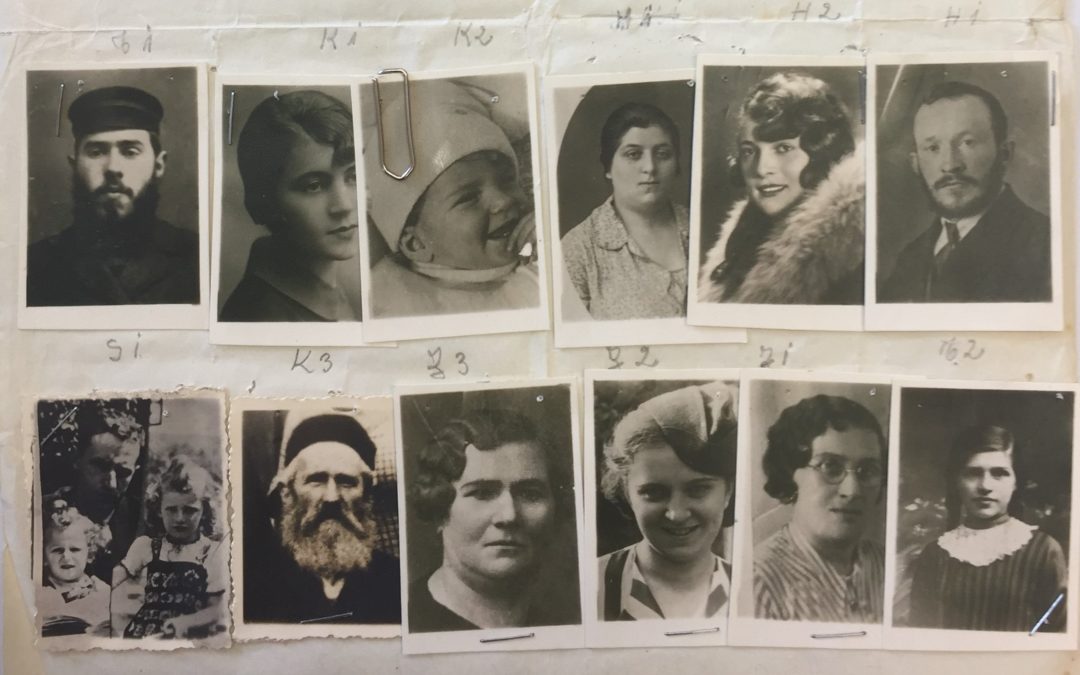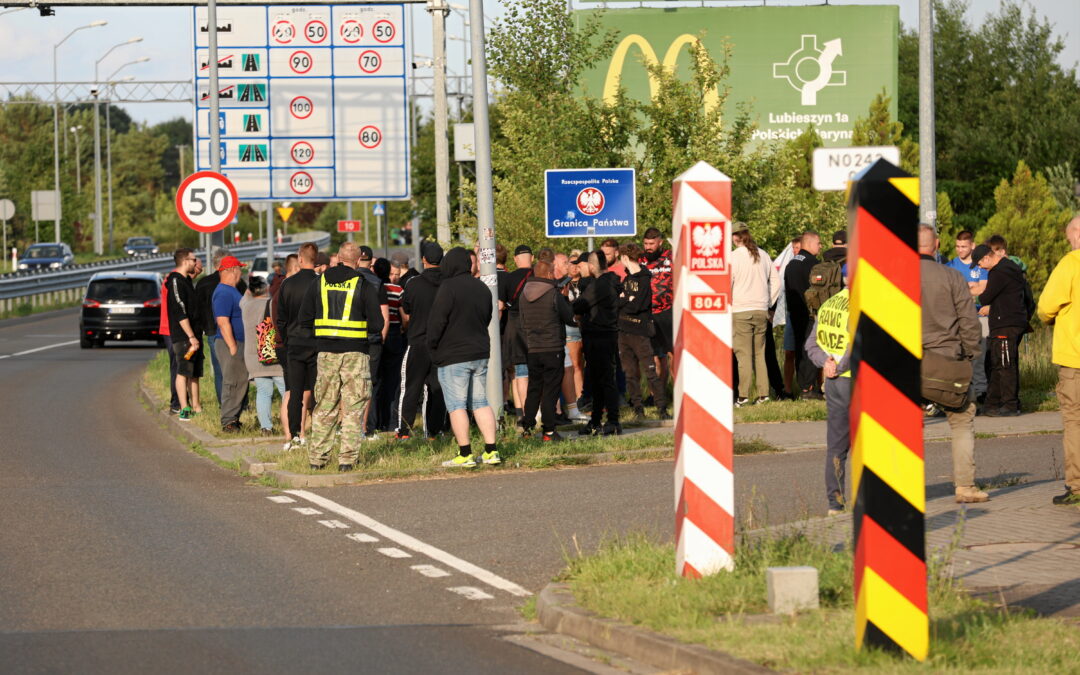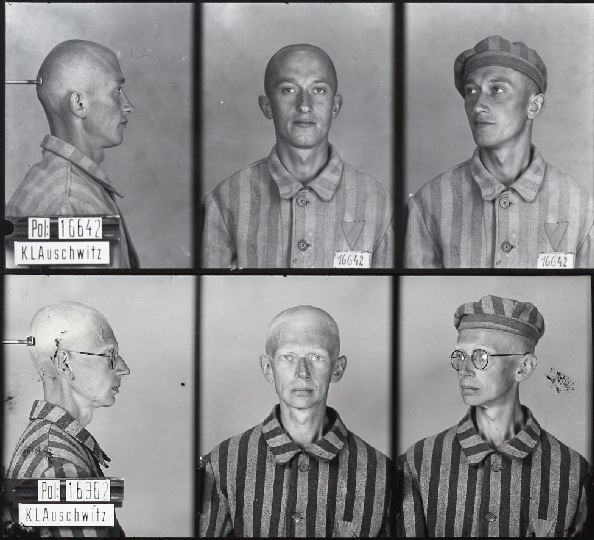By Percy Metcalfe
A new publication and exhibition shed further light on one of the most incredible – and until recently little known – stories of the Second World War. They show how Aleksander Ładoś, the Polish government-in-exile’s de facto ambassador to Switzerland, led a vast operation to produce thousands of forged passports that were intended to help Jews escape from German-occupied Europe during the Holocaust.
While details of the so-called Ładoś group’s activities have long been known, it is only in recent years that their full scale has become apparent. Now, a report from Poland’s Pilecki Institute, released today, provides even greater detail on their activity, while an exhibition at the Jewish Museum of Switzerland brings the story to wider public attention.
The Ładoś group
Ładoś’s team consisted of three fellow Polish diplomats – Stefan Ryniewicz, Konstanty Rokicki and Juliusz Kühl – along with two representatives of Jewish organisations, Abraham Silberschein of the World Jewish Congress and Chaim Eiss of Agudat Israel. Together they worked to provide Jews in occupied Europe with forged passports and papers from neutral South and Central American countries, in the hope that these documents would increase the holders’ chances of survival.
In Switzerland, surrounded by Axis-aligned powers, the operation carried great risks. The Swiss authorities were under enormous pressure to root out forgers and anyone who might endanger the country’s delicate neutrality. It was in this atmosphere that Ładoś’s team used a mixture of bribery and personal connections to acquire documents from representatives of the countries of Paraguay, Peru, Haiti and Honduras.
When the Swiss government sought to shut down the operation, Ładoś threatened to make public Swiss efforts to obstruct the saving of Jews, according to the current Polish ambassador to Switzerland, Jakub Kumoch, who is the editor of the Pilecki Institute’s new publication, which also notes that the Polish government-in-exile in London extended its full support to the diplomatic staff involved in this covert rescue scheme. Indeed, it pressured South and Central American countries to recognise the forgeries.
Although the exact means by which all the documents were completed with the details of the Jewish beneficiaries is not clear, the Paraguayan passports, which make up the largest number, were almost all filled in manually by Rokicki. His characteristic handwriting is scrawled across each Paraguayan forgery, which make up around half of the total number of fakes sent out. Through a network of co-conspirators and members of different resistance groups across Europe, the documents were subsequently distributed to those in desperate need.
Although the outline of Ładoś group’s work has long been known, the extent and relative success of the operation has only recently come to light. Kumoch explains that, in the past, historians have focused on the efforts by Ładoś to save those trapped in the Warsaw Ghetto. This aspect of the operation, he remarks, “was largely unsuccessful,” and it has overshadowed the more fruitful “Dutch and German side,” which yielded higher survival rates among Jews who had been citizens or residents in those countries prior to the outbreak of war.
How one family was saved
Heinz Lichtenstern, a prominent Jewish metal trader working and living in Amsterdam before the outbreak of war, was one of the recipients of a Paraguayan passport from the Ładoś group. His story, told today by his granddaughter, Heidi Fishman, a writer living in Vermont, illustrates anecdotally how this vast forgery and distribution scheme worked to save lives.
The Lichtenstern family had moved from Germany to Amsterdam in 1936 to escape the Nazi regime. Following the German occupation of the Netherlands, Heinz entrusted his savings to a non-Jewish Dutch colleague, Egbert de Jong, a government minister. With the temporary gift of 90,000 guilders, Lichtenstern asked De Jong, who had kept his government position under Nazi occupation, to find a way to help him and his family. In late October 1943, thanks to De Jong’s assistance, the family received a package of Paraguayan passports from Switzerland. However, initially these false documents brought no salvation.

Lichtenstern passport issued by the Paraguayan consulate in Bern Switzerland (from Heidi Fishman, popjeandme.com)
In her children’s book, Tutti’s Promise, which relates her family’s Holocaust story, Fishman describes her grandfather desperately showing the Paraguayan passports to the Jewish Emigration Office, only to be told that they made no difference. The family was shuffled back and forth between Amsterdam and Westerbork transit camp, before eventually being sent to the Theresienstadt ghetto in late 1944.
From there, Lichtenstern was selected for deportation again. The stated reason was that able-bodied men were needed for the construction of camps in Poland. However, he and the other deportees knew that their journey eastwards would end in death.
Although it had failed to make any difference before each previous deportation, Lichtenstern showed one of the guards his forged passport as he was about to board the train. To his surprise, this guard actually read and returned it, with an attached slip of paper. “Ausgeschieden,” or withdrawn, it read. The passport had finally done its job. It had saved a life.
Heidi Fishman heard this story many times. In the US, Fishman’s mother, Ruth (or Tutti), who had been in the camps with her father, used to tell it in schools. In 2012, Fishman decided to memorialise the events in a book. “I kept on encountering questions I couldn’t answer,” she said, “and it all came back to these Paraguayan passports.”
She knew that De Jong was the source of the passports for her family, but she did not know anything about any Polish diplomats. She vaguely understood De Jong as an “international bureaucrat,” who might have had connections everywhere, but eventually her research led her to Ambassador Kumoch, who invited her to a ceremony honouring the forger Rokicki, whose handwriting had saved her grandfather from Auschwitz.
Ładoś’s list
Heinz Lichtenstern, along with Fishman’s grandmother, mother, and uncle, are all recorded in the Pilecki Institute’s new publication, which seeks to recreate the “Ładoś List” of recipients of forged documents, as well as to ascertain the group’s success rate in assisting Jews in surviving the Holocaust.
The document lists the names and fates of almost 3,000 intended recipients – from Jeszaja Aberbach in Amsterdam, who received fake Honduran papers but failed to survive the war, to Michał Żurawin, an infant in the Vittel camp, who did survive. Analysis of recovered passports and other forged documents, their serial numbers, and a partial list of holders created by Abraham Silberschein, suggests that a further 5,000-7,000 fake papers – that is, up to 10,000 in total – were issued to recipients whose names are not yet known.
The study is careful to avoid making definitive assertions on the relative rates of survival of Ładoś passport holders compared to those who did not have such a benefit. Indeed, many of the people for whom documents were created never received their passports or even knew of these efforts to help them. From the data available to them, the researchers calculate that 14% of Polish Jews, 60% of Dutch Jews and 52% of German Jews with forged documents from the Polish group were able to survive the Holocaust.
However, the study provides a number of caveats, calling for deeper research into other factors that may have assisted the passport holders survive. For example, it notes that the holders were usually more influential or better organised than the average Jewish person, and many of them likely took additional survival measures that may have contributed to their escape.
Kumoch, who in addition to his role as ambassador holds a doctorate in political science from Kraków’s Jagiellonian University, was one of four authors of the Pilecki study. He explains that when he began investigating the Ładoś story, he thought it was another case of an “individual Righteous Pole.” However, as he dug deeper, “it became clearer that it was not a case of an ‘individual rescuer’, but a whole system” that spanned Europe and had direct input from the government-in-exile.
Talking in his capacity as ambassador, Kumoch even suggests that Ładoś’s influence goes beyond just the creation of documents. He says, “Ładoś is one of the greatest Holocaust rescuers,” not just because he created the documents, “but because they invented a scheme which was later used by others.” He cites the work of Swiss Consul Carl Lutz in Budapest – one of the most prolific Holocaust Rescuers, who also used Latin American passports, in this case from El Salvador – to protect Jews as a “continuation of the Ładoś group’s efforts.”
Edyta Gawron, a historian at the Jagiellonian University’s Institute of Jewish Studies, echoes Kumoch’s praise of the wartime ambassador. “Ładoś was involved in helping Jews on several levels,” she says, “not just providing foreign passports.” Gawron explains that Ładoś also worked to ensure the safety of Jews who arrived in Switzerland as refugees by protecting them from deportation. He acted, she asserts, with some degree support from the government-in-exile, who acceded to his requests for funding and to whom he sent “regular reports.”
Yad Vashem controversy
In April this year, Rokicki was honoured by Israel’s Yad Vashem as Righteous Among the Nations for his efforts to rescue Jews from the Holocaust. Many in Poland questioned why only he was honoured, whereas Ładoś and Ryniewicz received just letters of commendation. Yad Vashem responded that, according to the documents it had seen, “Rokicki was the dominant figure” in the fake-passport scheme.
This has been disputed, including by Kumoch himself, who in May suggested that Yad Vashem’s statement was “simply full of untruths”. The institution even misspelled Ładoś’s name and incorrectly referred to him only as a consul. Rockicki’s cousin has refused to accept the honour from Yad Vashem until the other Polish diplomats are recognised.
Truly speaking I can’t really understand why Rokicki was named Righteous Among the Nations alone. We know that there where six members of #BerneseGroup / #LadosGroup. Why did @yadvashem only “expressed appreciation” re others: Lados and Ryniewicz? https://t.co/Hpwdlfqpw4
— Sławomir Dębski (@SlawomirDebski) April 29, 2019
Since last year, Poland has made international headlines for a diplomatic spat with Israel over the actions of Poles during the Holocaust . The new book – published by a Polish state research institution and edited by a Polish ambassador – will inevitably be seen as part of efforts by Poland to highlight the role many Poles played in rescuing Jews from the Holocaust. Kumoch makes clear that he hopes his work to increase awareness about Ładoś will not be understood in those terms. “I have adopted a basic rule: I am speaking about facts,” he says, pointing out that the research into Ładoś began in spring 2017, well before the more recent controversies.
Separately, the story of the Ładoś group is the subject of a new exhibition at the Jewish Museum of Switzerland in Basel, created in cooperation with the Archive of Contemporary History of the Swiss Federal Institute of Technology. Passports, Profiteers, Police: A Swiss War Secret, which opened at the end of November, presents the activities of the Ładoś group from a Swiss perspective, using documents and original objects to reconstruct the story. Sylvia Battegay, the museum’s curator, recalls how her research team was “overwhelmed” by the number of relevant documents her team found in Swiss archives, noting that the exhibition could have been twice as large.
The exhibition «Passports, Profiteers, Police: A Swiss War Secret» at the Jewish Museum of Switzerland tells the story of an underground rescue network in Switzerland which helped thousands of Jews escaping from Germany and its occupied territories. More: https://t.co/FDQ8yAXHPH pic.twitter.com/NiluUcOjRA
— Basel (@baseltourism) November 29, 2019
Main image credit: © Schweizerisches Bundesarchiv, Bern

Percy Metcalfe is an American Fulbright student located in Warsaw for the academic year of 2019/20. He is carrying out a research project on the performance of national identity in the Polish-U.S. bilateral relationship at the University of Warsaw while also working part time for Notes from Poland.




















